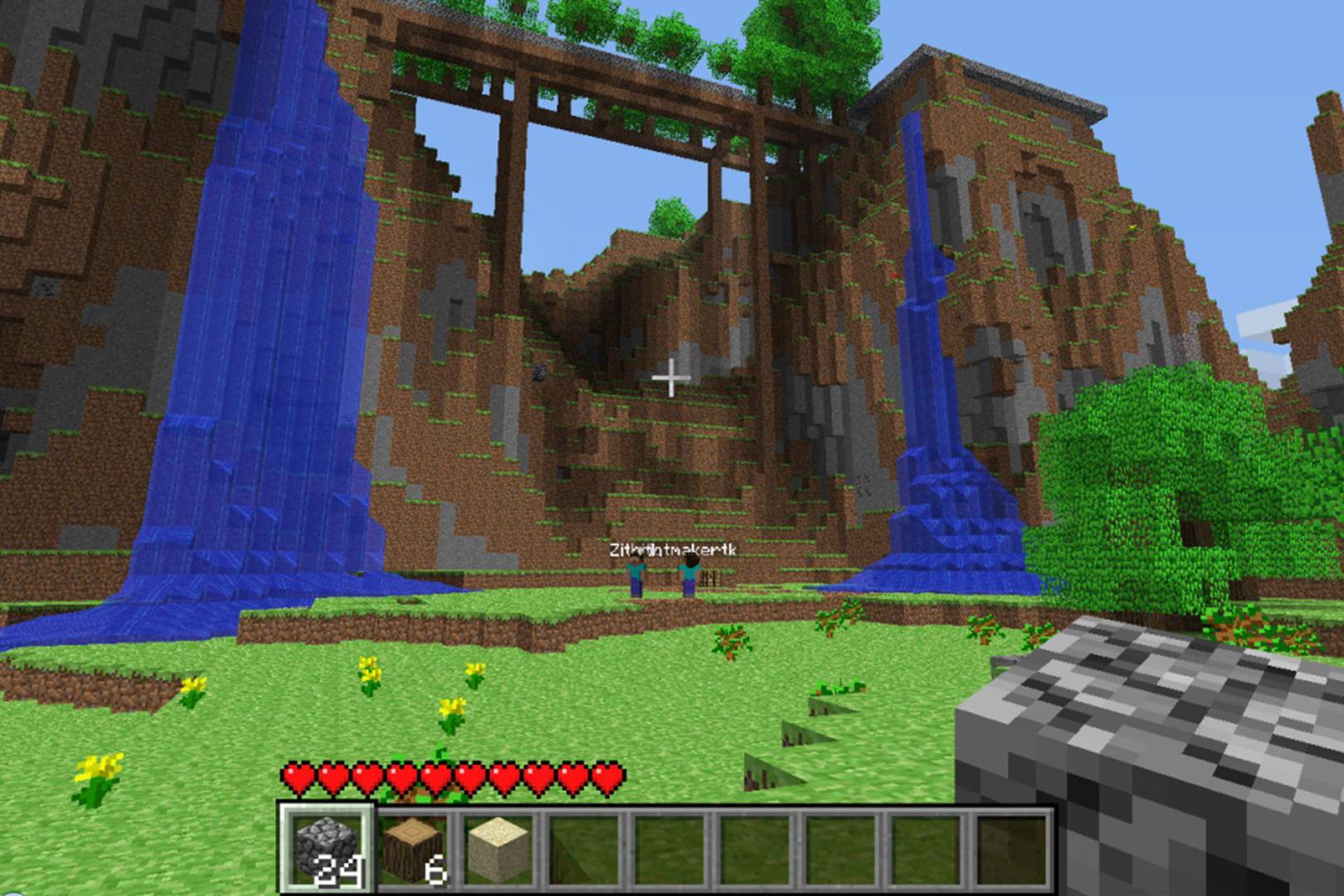Minecraft’s vast and intricate world is teeming with diverse wildlife, ranging from friendly animals to formidable monsters. These creatures contribute to the game’s dynamic ecosystem, creating a sense of immersion and environmental storytelling. This guide delves into the key aspects of Minecraft’s wildlife, providing insights into their behavior, characteristics, and importance within the game’s mechanics.

-
Mobs: The term “mob” encompasses all living entities in Minecraft, including animals, monsters, and the player character. They possess various behaviors, abilities, and interactions with the environment and other entities.

-
Animal Mobs: Animal mobs, like cows, pigs, and sheep, are passive entities that pose no threat to the player. They provide valuable resources, such as food, leather, and wool, when successfully hunted or bred.

-
Hostile Mobs: Hostile mobs, such as zombies, skeletons, and creepers, pose a significant threat to players. They attack on sight, making it imperative for players to be prepared with armor, weapons, and strategies to ensure their survival.
-
Passive Mobs: Passive mobs, like rabbits, chickens, and ocelots, are typically non-aggressive towards players. They can be tamed, bred, or used for various purposes, such as transportation, exploration, and food sources.
-
Neutral Mobs: Neutral mobs, like slimes, spiders, and endermen, exhibit conditional aggression. They may attack players if provoked or disturbed, emphasizing the need for careful navigation and situational awareness.
-
Unique Mobs: Unique mobs, such as the Ender Dragon, Wither, and Villagers, occupy specific roles and hold significant gameplay value. They pose formidable challenges, offer exclusive rewards, and contribute to the game’s overarching narrative and quests.
-
Importance of Wildlife: Wildlife in Minecraft plays a multifaceted role. It enhances the game’s atmosphere by creating a sense of life and dynamism. Moreover, it serves as a vital resource, providing food, materials, and even companionship to players.
-
Breeding and Farming: Players can engage in animal husbandry by breeding and farming animals. This process allows for a sustainable source of resources and involves techniques like feeding, building pens, and managing breeding pairs.
-
Taming and Companionship: Certain mobs, like wolves and horses, can be tamed and become loyal companions. They assist players in combat, provide transportation, and add an element of emotional attachment to the gameplay experience.
-
Environmental Factors: Minecraft’s wildlife is influenced by environmental factors like biomes, time of day, and weather conditions. Mobs exhibit specific behaviors and adaptations based on these factors, adding depth and realism to the game world.
Minecraft’s wildlife is a captivating aspect that adds tremendous depth and vibrancy to the gameplay experience. Whether encountering hostile mobs in a dark cave, taming a loyal wolf companion, or discovering hidden secrets within unique mob encounters, the creatures of Minecraft play an integral role in crafting a rich and fulfilling adventure for players.# Minecraft’s Wildlife: A Guide To The Animals And Monsters
Executive Summary
Minecraft offers a diverse range of animals and hostile creatures known as “mobs.” These mobs add vibrancy to the world, offering various gameplay elements, items, and interactions for players. This in-depth guide explores Minecraft’s wildlife, including animals and monsters, providing essential information about their behavior, habitat, and utility.
Introduction
Minecraft boasts an impressive array of animals and monsters that roam its vast biomes, creating a vibrant and immersive gaming experience. Ranging from the docile cows providing sustenance to the fearsome creepers that pose a danger at night, understanding these creatures’ behavior and attributes can significantly enhance your Minecraft gameplay.
Animals
Minecraft’s animals play a crucial role in the game mechanics, offering various benefits to players. Whether it be for food, resources, or companionship, these creatures add a layer of realism and complexity to the Minecraft experience.
Cows
- Providing Leather and Beef: Cows are a primary source of leather, an essential material for crafting books, armor, and saddles. They also drop beef upon death, serving as a valuable food source.
- Breeding and Farming: Cows can be bred using wheat, allowing players to establish cow farms for a steady supply of food and leather. This automated food production can be invaluable, especially in the early game stages.
- Milk for Potions: Cows can be milked using a bucket, providing milk that can be used in brewing potions. Milk is particularly useful in crafting potions of Healing and Fire Resistance.
Pigs
- Bacon and Porkchops: Pigs are another valuable source of food, dropping porkchops upon death. These porkchops can be cooked into bacon, a delicious food item that restores hunger and regeneration.
- Saddle Crafting: Pigs have the unique ability to wear saddles, allowing players to ride them. With a saddle, players can quickly travel across Minecraft’s vast landscapes.
- Breeding and Farming: Similar to cows, pigs can be bred and raised on farms, providing a renewable source of food and resources.
Chickens
- Eggs and Feathers: Chickens are primarily valuable for their eggs, which can be used as food or in crafting recipes. Additionally, chickens occasionally drop feathers, which are necessary for crafting arrows.
- Breeding and Farming: Chickens can be bred and raised on farms, just like other animals, ensuring a consistent supply of eggs and feathers.
- Chicken Jockey: Rarely, a chicken can spawn riding a skeleton, creating a hostile mob known as a “chicken jockey.” Killing this unique mob grants experience points and valuable loot.
Wolves
- Companions and Protection: Wolves can be tamed using bones, becoming loyal companions that follow and protect players throughout their adventures. Their aggressive nature towards hostile mobs makes them formidable allies in combat scenarios.
- Breeding and Packs: Wolves can be bred with each other to create wolf pups. Maintaining a pack of wolves can provide numerous advantages and enhance overall protection during gameplay.
- Loyalty and Commands: Once tamed, wolves become fiercely loyal, obeying basic commands such as “sit” and “stay.” This obedience allows players to maintain control and manage their wolf companions effectively.
Monsters
Minecraft’s hostile mobs pose a significant challenge to players, creating a thrilling and engaging gaming experience. These menacing creatures add an element of danger and suspense, encouraging exploration and resourcefulness to survive and thrive.
Creepers
- Explosive Threat: Creepers are characterized by their green, blocky appearance and their devastating explosive ability. When they get too close to players, creepers detonate, causing massive damage to the surrounding area.
- Silence and Ambush: Creepers move silently, making them difficult to detect. They often sneak up on players, increasing the likelihood of surprise attacks and the risk of losing valuable resources.
- Valuable Gunpowder: Despite their dangerous nature, creepers provide a valuable resource: gunpowder. Defeating creepers yields gunpowder, an essential ingredient for creating TNT, fireworks, and various other explosive devices.
Zombies
- Undead Hordes: Zombies are abundant, slow-moving mobs that pose a persistent threat to players, particularly at night. They often gather in large hordes, overwhelming players and making survival incredibly challenging.
- Infection and Cures: Zombies have the ability to infect villagers, transforming them into zombie villagers. Dealing with zombie villagers is crucial to prevent the spread of infection and maintain flourishing villages.
- Valuable Loot: Although zombies are common, they occasionally drop valuable resources upon death. These resources include iron ingots, carrots, and potatoes, adding incentive to engage in combat with these hostile mobs.
Skeletons
- Ranged Attacks: Skeletons are armed with bows and arrows, making them capable of launching deadly ranged attacks from a distance. Their arrows can inflict significant damage, especially when encountered in large numbers.
- Nighttime Spawn: Skeletons primarily spawn during nighttime, making outdoor activities perilous. Players must be prepared for encounters with these ranged attackers to maintain safety and progress in Minecraft.
- Wither Skeletons: In the Nether, a unique variant known as wither skeletons exists. These powerful skeletons possess ranged attacks and can also inflict the dangerous Wither effect, making them formidable opponents.
Endermen
- Teleportation and Agitation: Endermen are mysterious creatures with the ability to teleport short distances, making them evasive and unpredictable. Additionally, they are highly sensitive to eye contact, becoming hostile if a player directly stares at them.
- Valuable Ender Pearls: Endermen hold Ender pearls, rare and valuable resources used in crafting teleportation devices and other advanced technology. Defeating endermen presents an opportunity to acquire these rare commodities.
- Aggression and Endermite Summons: Endermen are fiercely territorial, attacking players who enter their vicinity. Furthermore, they have the ability to summon Endermites, smaller hostile mobs that can inflict additional damage.
Conclusion
Minecraft’s captivating world comes alive through its diverse wildlife, comprising a range of animals and monsters. Players embarking on their journey, whether in Survival or Creative mode, will encounter these creatures that enhance the overall gameplay experience. By understanding the behavior, traits, and utility of each animal and monster, players can navigate Minecraft’s rich biomes with greater efficiency and confidence, ultimately thriving in their quest to explore, build, and survive.
Keyword Phrase Tags
- Minecraft animals
- Minecraft monsters
- Minecraft mobs
- Minecraft hostile mobs
- Minecraft friendly mobs


I really enjoyed this article! It was very informative and well-written.
This article is terrible! It’s full of errors and doesn’t even make sense.
I found this article to be very helpful. I learned a lot about Minecraft’s wildlife.
I disagree with the author’s assessment of the Ender Dragon. I think it’s a much more difficult boss to defeat.
Oh, wow, another article about Minecraft’s wildlife. How original.
The author of this article must be a real noob. They don’t even know how to defeat the Wither.
I love how the author describes the Creeper as a ‘sneaky little bugger.’ That’s exactly what they are!
This article is so long! Can’t the author just get to the point?